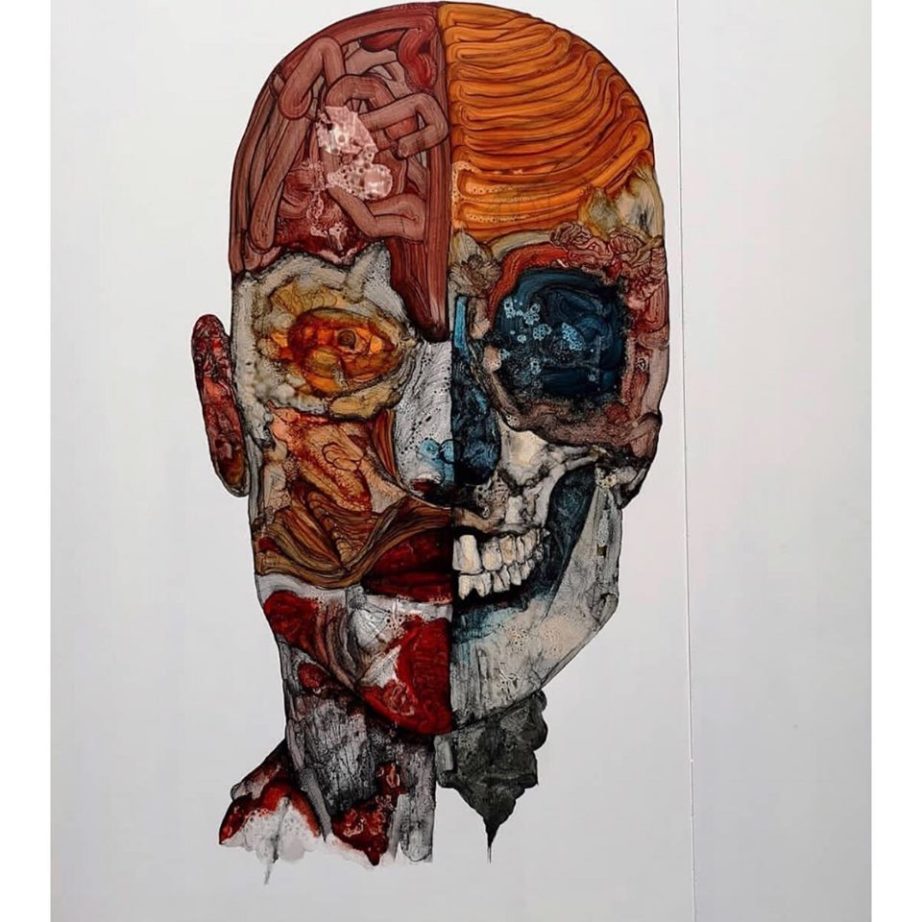« The body (…) is a universal language affecting each of us. »
Interview by Caroline Canault.
The paintings of David Deweerdt can be read like an anatomical cross-section which reveals, through the transparency of the body, the skeleton, organs, innards and more. He revisits genuine aesthetic radiography.
How would you qualify your pictorial approach?
My pictorial approach aims to push people out of their comfort zone, even to shock them, but it is also free from hang-ups and genuine.
What techniques do you use?
It would be difficult to go through all of them in detail. However, generally speaking, I work with acrylics and ink that I apply to a rigid, smooth surfaces such as wood. I apply successive layers of paint in order to add depth to my works.
Why choose to explore the human body in particular?
I find the human body to be a good vector for painting as it is a universal language each of us is concerned by.
The fragmentation and distortion of the body occupy a central space in your work…
Yes. I use splintering as a tool to get the person looking to question the relationship they have with their body and the notion of normality. I am especially interested in this fact regarding exclusion, rejection and difference.
Your lively palette contains recurring blood red hues, how would you express your attraction to this colour?
My attraction to red hues is purely aesthetic. The relationship the spectator establishes between this colour and blood is purely their own.
What do your figures express? Are you trying to guide the spectator via a message they are communicating?
I paint figures which will prompt the viewer to react, this is true, yet I do not wish to convey something which belongs to me only. I see myself more as a “director” who has come to trigger different sensations among the spectators. A bit like someone setting up a scene on stage, void of narration.
According to you, in what way does figurative desctructurallism, bear aesthetic witness to our times?
I am a figurative painter redefining new aesthetic norms based around the human body and sometimes that of animals. Déstructuralisme Figuratif for me, is a means of achieving this, just like corporeal modelling.






